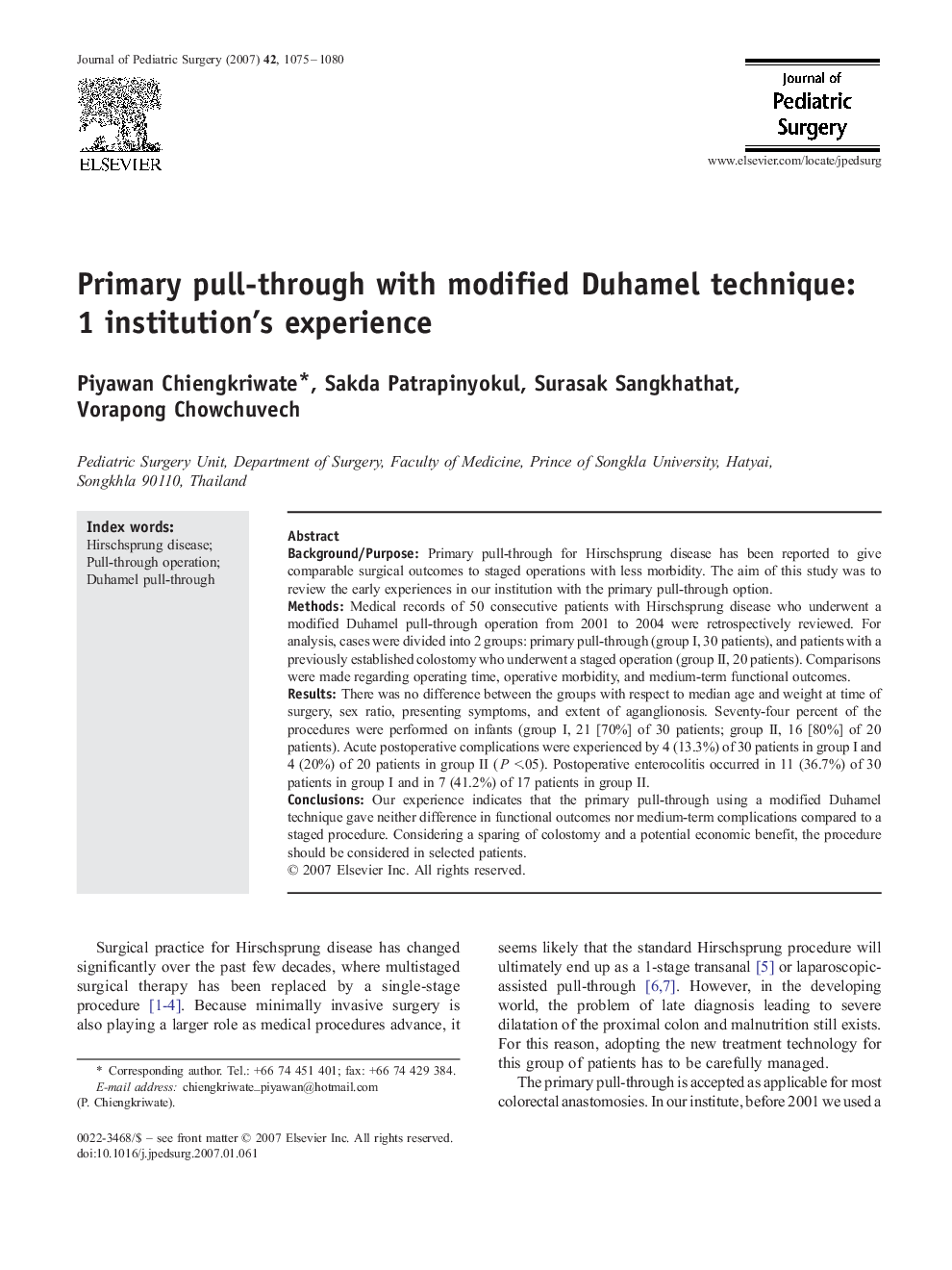| Article ID | Journal | Published Year | Pages | File Type |
|---|---|---|---|---|
| 4159548 | Journal of Pediatric Surgery | 2007 | 6 Pages |
Background/PurposePrimary pull-through for Hirschsprung disease has been reported to give comparable surgical outcomes to staged operations with less morbidity. The aim of this study was to review the early experiences in our institution with the primary pull-through option.MethodsMedical records of 50 consecutive patients with Hirschsprung disease who underwent a modified Duhamel pull-through operation from 2001 to 2004 were retrospectively reviewed. For analysis, cases were divided into 2 groups: primary pull-through (group I, 30 patients), and patients with a previously established colostomy who underwent a staged operation (group II, 20 patients). Comparisons were made regarding operating time, operative morbidity, and medium-term functional outcomes.ResultsThere was no difference between the groups with respect to median age and weight at time of surgery, sex ratio, presenting symptoms, and extent of aganglionosis. Seventy-four percent of the procedures were performed on infants (group I, 21 [70%] of 30 patients; group II, 16 [80%] of 20 patients). Acute postoperative complications were experienced by 4 (13.3%) of 30 patients in group I and 4 (20%) of 20 patients in group II (P <.05). Postoperative enterocolitis occurred in 11 (36.7%) of 30 patients in group I and in 7 (41.2%) of 17 patients in group II.ConclusionsOur experience indicates that the primary pull-through using a modified Duhamel technique gave neither difference in functional outcomes nor medium-term complications compared to a staged procedure. Considering a sparing of colostomy and a potential economic benefit, the procedure should be considered in selected patients.
